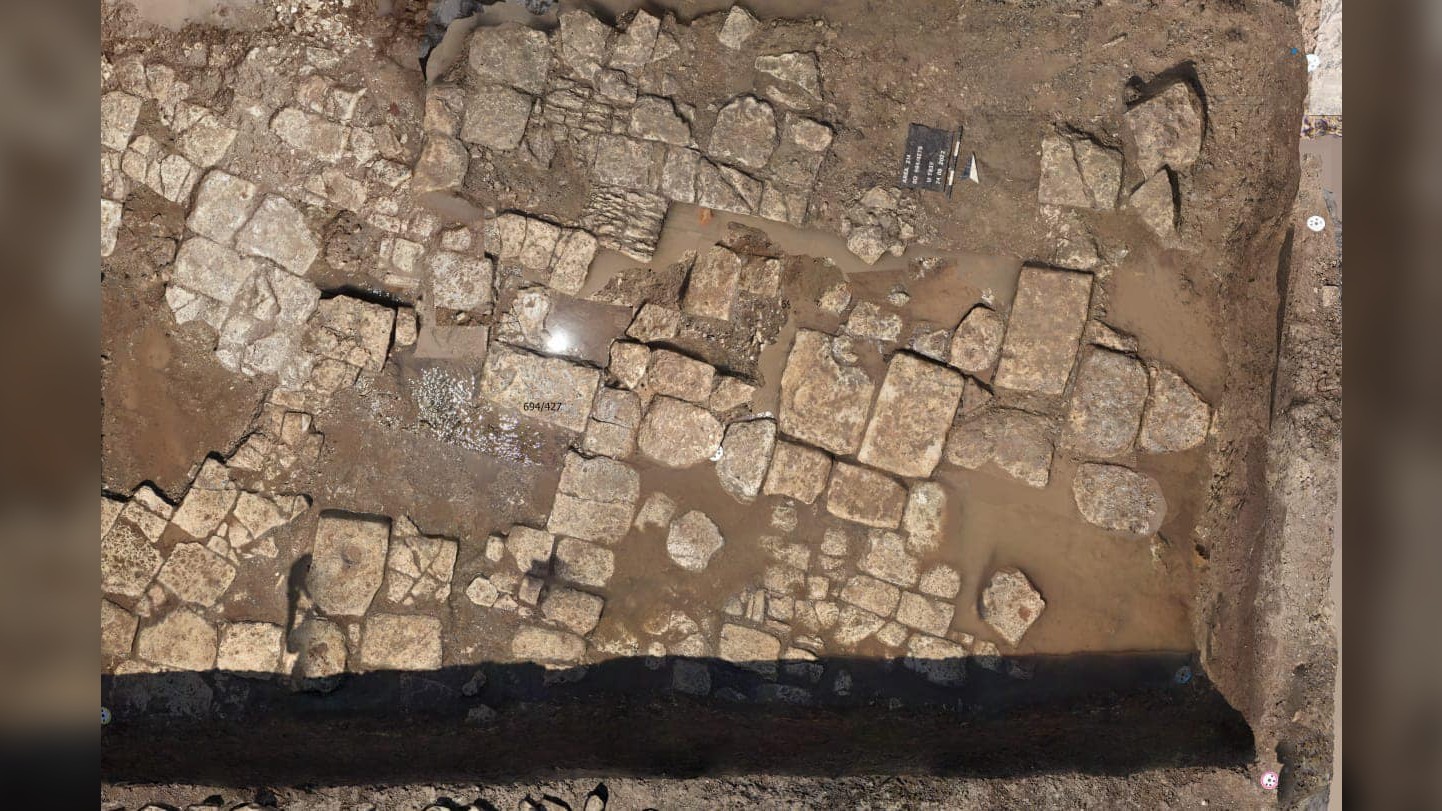Ancient Egyptian pharaoh-sphinx statues unearthed at sun temple
Archaeologists have discovered broken pharaoh-sphinx statues at an ancient Egyptian sun temple.

Archaeologists in Egypt have discovered broken statues of ancient royalty at a sun temple in Heliopolis, an archaeological site that was once a major city near what is now Cairo.
The stone-carved fragments include depictions of Ramesses II (reign circa 1279 B.C. to 1213 B.C.), Ramesses IX (reign circa 1126 B.C. to 1108 B.C), Horemheb (reign circa 1323 B.C. to 1295 B.C.) and Psamtik II (reign 595 B.C. to 589 B.C.), the Egyptian Ministry of Tourism and Antiquities said in a statement released March 20.
Sun temples are found at a number of sites in Egypt and are dedicated to Ra, the ancient Egyptian sun god, but the sun temple at Heliopolis was of particular importance. (Heliopolis is a Greek name; the Egyptian name was Iunu.)
According to ancient Egyptian belief, Heliopolis is where "the world was created, with the first sunrise," excavation dig leader Dietrich Raue, the director of the Cairo department of the German Archaeological Institute, told Live Science in an email. "Here the connection of kingship to the creator and sun god was celebrated," Raue said, noting that pharaohs constructed statues, obelisks and other structures at Heliopolis to legitimize their rule and honor the sun god.
Related: Newfound ancient Egyptian sphinx statue may depict Roman emperor Claudius, but not everyone agrees
"Serving the gods was one of the major duties of ancient Egyptian kings, and dedicating statues is a part of this," Raue explained. "Ideally, no ruler of Egypt should be in office without the blessing of the sun-god."
The newly discovered statue fragments, which show the heads of the pharaohs on sphinxes, would have been placed in front of gates or beside obelisks at the sun temple, Raue said. At some point in antiquity, the statues were destroyed and reused as building materials, he added.
Get the world’s most fascinating discoveries delivered straight to your inbox.
Live Science contacted scholars not involved with the excavation to get their thoughts. "The abundant statuary material found by the mission testify of the long-lasting importance of the site in pharaonic [times]," Massimiliano Nuzzolo, an Egyptologist with the Polish Academy of Sciences who is studying a sun temple at Abu Ghurab in Egypt, told Live Science in an email. The pharaoh-sphinx findings also reveal "the wish of the kings of the second and first millennium [B.C.] to leave a tangible sign of their worship for the sun god Ra in one of the main places of Egyptian civilization," Nuzzolo added.
Peter Brand, a history professor who specializes in Egyptology at the University of Memphis, said that there is much we still don't know about Heliopolis. For instance, while Ramesses II was a prominent pharaoh who expanded Egypt's empire, it's not clear if he rebuilt parts of this sun temple or continued using an older one.
"Archeologists have only scratched the surface of this area," Brand told Live Science in an email. "Much of its rich and complex history over the course of three millennia of pharaonic history patiently await[s] discovery beneath the desert sands."

Owen Jarus is a regular contributor to Live Science who writes about archaeology and humans' past. He has also written for The Independent (UK), The Canadian Press (CP) and The Associated Press (AP), among others. Owen has a bachelor of arts degree from the University of Toronto and a journalism degree from Ryerson University.




